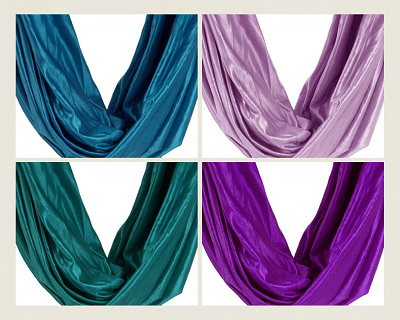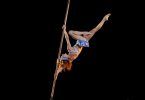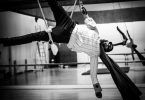Imagine a world where athletes soar through the air, defying gravity with breathtaking grace and strength. A world where creativity meets athleticism and the boundaries of human potential are pushed to their limits. In this mesmerizing world, artists climb, twist, and soar through the air with grace and precision, leaving audiences spellbound. Yet, despite its global appeal and undeniable beauty, the question lingers: why haven’t aerial silks secured their place on the Olympics stage? Join us as we delve into the complexities surrounding the quest for Aerial Silks Olympic Inclusion, exploring the challenges, aspirations, and dreams that shape its journey towards Olympics recognition.
The Olympic Dream: What It Means for a Sport
The Olympics are the pinnacle of athletic achievement, a celebration of human physical prowess, and a stage where dreams are realized and legends are born. Being included in the Olympics Games can catapult a sport into the global spotlight, bringing in funding, recognition, and a surge in participation. But the path to Olympics inclusion is not a simple one; it’s fraught with challenges and scrutiny. So, what does it take for a sport to make it to the Olympics?
Inclusion Criteria for the Olympics
- Global Reach: To be considered for the Olympics, a sport must have a widespread global presence. It should be practiced in numerous countries on various continents. This ensures that the Games truly represent a cross-section of the world’s sporting culture.
- Governing Body: Every sport aspiring to join the Olympics must have a recognized international governing body that sets rules, oversees competitions, and promotes the sport globally. This governing body is crucial for ensuring uniformity and fairness in the sport.
- Gender Equality: The International Olympic Committee (IOC) places a strong emphasis on gender equality. For a sport to be included, it should ideally have equal participation opportunities and events for both men and women.
- Anti-Doping Commitment: The sport’s governing body must adhere to strict anti-doping policies and testing procedures to ensure fair competition.
- Ethical and Safe Practices: The IOC values sports that uphold ethical standards and prioritize athlete safety. Any sport with a history of controversy, doping scandals, or unsafe practices faces an uphill battle for inclusion.
Given these criteria, it’s clear that for aerial silks to enter the Olympic arena, it would need to surmount substantial hurdles.
Aerial Silks: The Mesmerizing Art
Aerial silks, also known as aerial fabric or tissue, are performing art that combines acrobatics, dance, and aerial gymnastics. Artists climb, twist, spin, and contort their bodies on long lengths of fabric suspended from the ceiling. The result is a breathtaking display of strength, flexibility, and artistic expression that leaves audiences spellbound.
Discover the enchanting world of aerial silks with our premium silks available at our eshop.

Exclusive Offer: Enjoy a 10% discount on all aerial silks purchases for our valued readers. Use code ‘AERIAL10’ at checkout to claim your savings. Click on the image to buy
The Uniqueness of Aerial Silks
Aerial silks stand out in the world of sports and performing arts for several reasons:
- Creative Expression: Aerial silks allow for a high degree of creativity. Artists can choreograph routines that tell stories, convey emotions, and captivate the audience through graceful movements and stunning drops.
- Physical Demands: The sport demands exceptional physical fitness. Artists must possess strength, flexibility, and endurance to execute intricate maneuvers high above the ground.
- Gender Inclusivity: Aerial silks are one of the few performance arts where gender plays no role in an artist’s capabilities. Both men and women excel in this discipline, fostering a sense of equality and inclusivity.
- Global Appeal: Aerial silks have gained popularity worldwide, with communities of enthusiasts and performers in numerous countries. Workshops, classes, and performances are held on every continent.
The Quest for Aerial Silks Olympics Inclusion
Given its unique attributes and global presence, one might wonder why aerial silks have not yet found a place in the Olympics. To answer this question, we need to delve into the specific challenges and controversies that surround the sport.
The Challenges of Olympic Inclusion for Aerial Silks
Lack of a Unified Governing Body
One of the primary hurdles for aerial silks is the absence of a unified governing body that oversees the sport at the international level. While there are organizations and associations dedicated to promoting and regulating aerial silks, they do not have the same level of recognition as established Olympic sports. Without a single, globally recognized governing body, it becomes difficult for aerial silks to meet the IOC’s criteria for inclusion.
Safety Concerns
Safety is a paramount concern for the Olympics, and any sport seeking inclusion must demonstrate that it adheres to strict safety standards. Aerial silks, with their high-flying acrobatics, present inherent risks. While safety measures and training protocols exist within the aerial silks community, they may not yet meet the stringent requirements set by the IOC.
Gender Equality
Gender equality is a core principle of the Olympics, and sports that do not offer equal opportunities for both men and women face challenges in gaining acceptance. Aerial silks, while open to all genders, may need to make additional efforts to ensure equitable representation and opportunities at the competitive level.
Limited Competitive Structure
For a sport to thrive in the Olympics, it needs a well-established competitive structure, including regional and international competitions, rankings, and a clear path to Olympic qualification. Aerial silks competitions exist, but they are not as widespread or standardized as those of established Olympic sports. This lack of a robust competitive framework can hinder the sport’s journey to the Games.
Misconceptions and Stereotypes
Aerial silks, like many art forms, face misconceptions and stereotypes. Some perceive it as solely a performance art rather than a competitive sport. Overcoming these stereotypes and educating the broader public about the athletic rigor of aerial silks is essential for its acceptance into the Olympic fold.
Controversies Surrounding Aerial Silks in the Olympics
The path to Olympic inclusion is often fraught with controversies and debates. Let’s explore some of the contentious issues surrounding the potential inclusion of aerial silks in the Games.
Commercialization and Authenticity
One concern is the commercialization of aerial silks. Some argue that the pursuit of Olympic status may lead to a commodification of the art, with an emphasis on marketability over artistic authenticity. This debate raises questions about the balance between artistic expression and competitive sport within aerial silks.
Cultural Sensitivity
Aerial silks have deep cultural roots in various parts of the world, including China and the circus traditions of Europe. Critics worry that the sport’s entry into the Olympics could lead to cultural appropriation or a dilution of its traditional significance. Addressing these concerns would be crucial in navigating the path to inclusion.
Judging and Scoring
Developing a fair and transparent judging system for aerial silks poses a challenge. The subjective nature of artistic interpretation in the sport makes it difficult to establish consistent and unbiased criteria for scoring. Finding a balance between artistic merit and objective evaluation is a contentious issue
Resource Allocation
The Olympics require substantial resources, from funding for athletes to infrastructure and facilities. Critics argue that investing in the inclusion of aerial silks could divert resources from other established sports. The question of resource allocation becomes a key point of debate in discussions about adding new sports to the Olympic program.
Frequently Asked Questions About the Aerial Silks Olympics Inclusion
Q1: Is there a formal effort for Aerial Silks Olympics Inclusion?
A1: Yes, various individuals and organizations within the aerial silks community have expressed interest in Olympic inclusion. However, the road to the Olympics is a complex one, and it requires concerted efforts, including meeting the IOC’s criteria and addressing the challenges outlined in this article.
Q2: Are there other alternative platforms for aerial silks competition?
A2: Yes, numerous national and international aerial silks competitions provide platforms for athletes to showcase their skills and artistry. While not Olympic events, these competitions play a vital role in the development of the sport.
Q3: Are there any athletes advocating for aerial silks in the Olympics?
A3: Several prominent aerial silks artists and athletes have voiced their support for the sport’s inclusion in the Olympics. They believe that the global stage of the Games would help elevate aerial silks to a new level of recognition and appreciation.
Wrapping Up the Aerial Silks Olympics Inclusion
In the sky-high world of aerial silks, where athletes defy gravity and create breathtaking art, the dream of Olympic inclusion remains just out of reach. While the sport possesses unique attributes and a global following, it faces significant challenges on its journey to the Games. From the absence of a unified governing body to safety concerns and debates about commercialization, the path to Olympic status is filled with hurdles.
However, the aerial silks community continues to dream and work toward this lofty goal. Advocates and athletes believe that the beauty, athleticism, and inclusivity of aerial silks deserve a place on the world’s greatest sporting stage.
As we ponder the question, “Why are aerial silks not in the Olympics?” we must also consider the broader issues of authenticity, cultural sensitivity, and resource allocation. These debates highlight the complexities of Olympic inclusion and the need for careful deliberation.
While the future of aerial silks in the Olympics remains uncertain, one thing is clear: the passion and dedication of its practitioners will continue to soar, whether on the Olympic stage or in the countless theaters and studios around the world where this mesmerizing art form finds its home.
So, as we bid adieu to this aerial odyssey, let us keep our eyes on the sky and our hearts open to the possibility that one day, aerial silks may indeed take flight in the Olympic Games.








